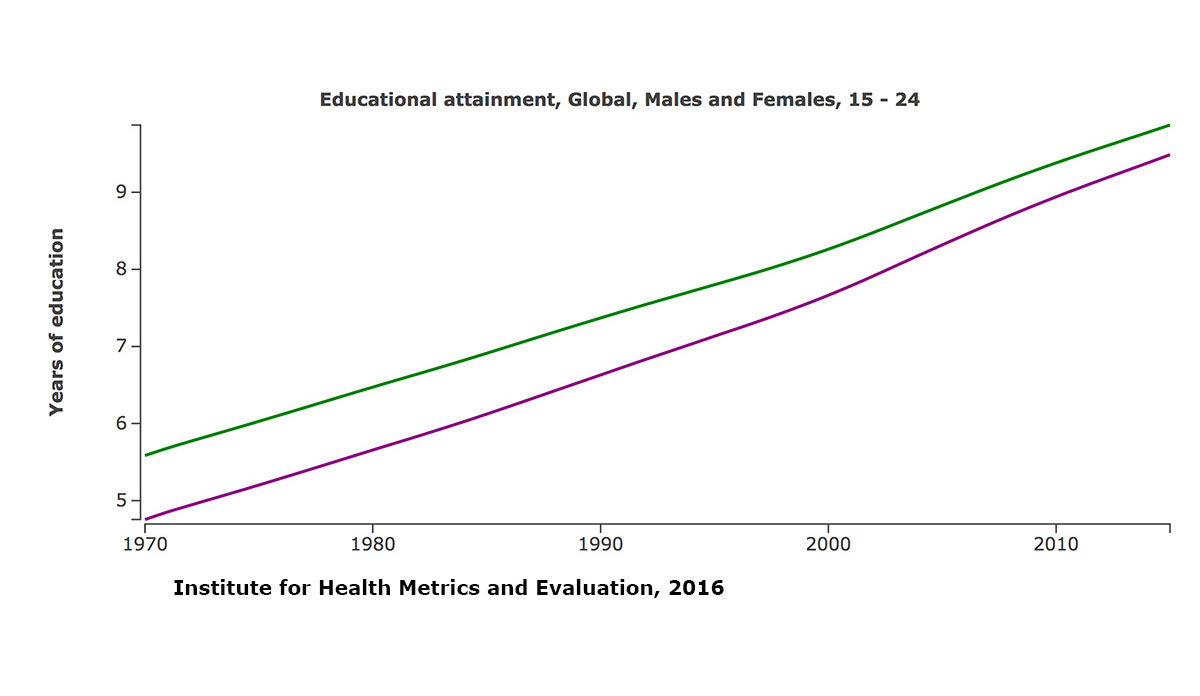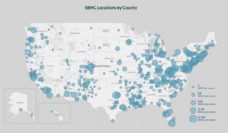Education is one of the most powerful drivers of wellness, particularly with regard to life expectancy and healthy behaviors. A Robert Wood Johnson Foundation Health Policy Snapshot makes this clear: four additional years of education reduces an individual’s risk of diabetes by 1.3%, heart disease by 2.2%, obesity by 5%, and smoking by 12%. The expected lifespan for female college graduates is 83.5 years compared to 78.4 years for females with less than a high school education. The expected lifespan for male college graduates is 79.7 years compared to 72.9 years for males with less than a high school education.
According to the Institute for Health Metrics and Evaluation, data pooled between January 1970 and December 2015 highlighted educational disparities between males and females. Globally, the disparity in educational attainment among males compared to females is greatest among individuals 45 years and older. Males aged 45-54 attained 9.14 years of education compared to 7.46 years of education for females of the same age. Males aged 55-65 attained 8.42 years of education compared to 6.74 years of education for females of the same age. The educational attainment gap is even greater for individuals 65 years and older. Males aged 65 and older attained 7.49 years of education compared to 5.97 years of education for females of the same age. Although the number of years of education attained for both males and females has increased globally since 1970, we still note a disparity between males and females (green and purple, respectively, in the above graph). Laws, policies, and programs addressing health determinants should implement education interventions to mitigate these disparities in access.
Databyte via Social Determinants of Health Visualization. Institute for Health Metrics and Evaluation. Key: Males = green, females = purple.













